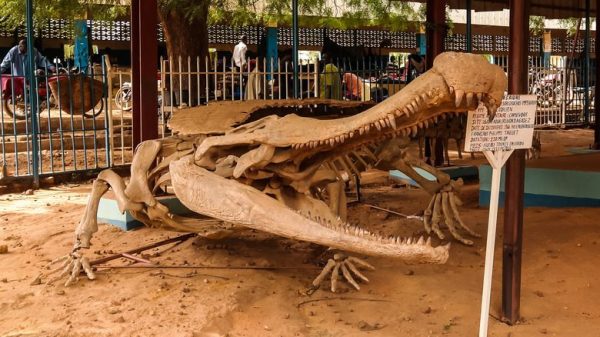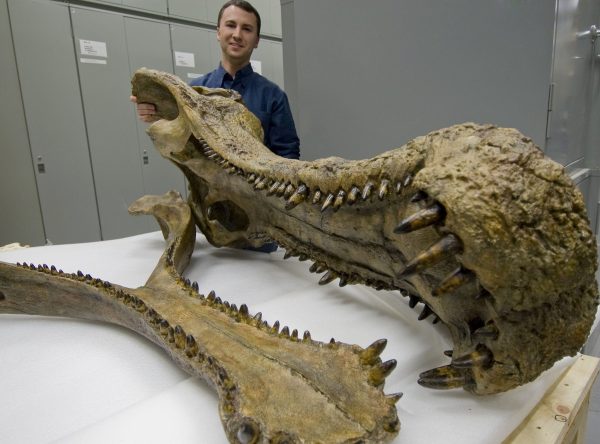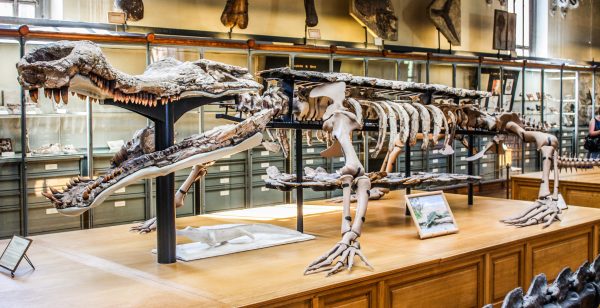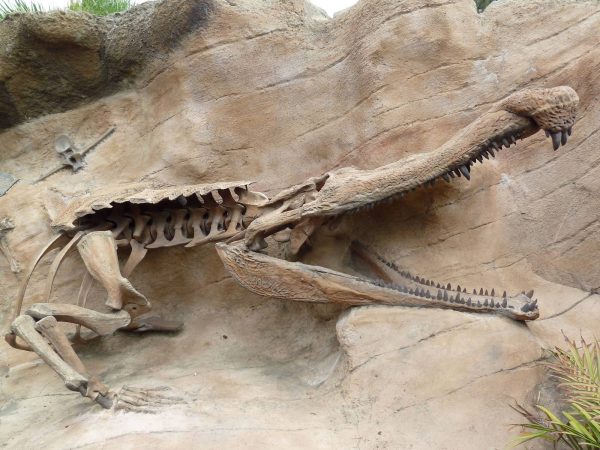In the annals of prehistory, a colossal reptilian behemoth emerges as a formidable force—the Sarcosuchus, a 40-foot crocodile that cast a shadow over ancient landscapes.

Unveiling its story requires a journey back 113 million years to the Cretaceous period, a time predating the extinction of dinosaurs by roughly 50 million years. Astonishingly, the Sarcosuchus fossils are approximately 23 million years older than the infamous Tyrannosaurus rex, adding a layer of mystique to this ancient predator’s legacy. Most Sarcosuchus fossils have been unearthed in West Africa, offering a glimpse into a primeval world where these creatures navigated expansive river deltas that once connected Africa and South America.

These river systems served as the highways of an ancient ecosystem, where the Sarcosuchus shared its watery domain with giant fish, coelacanths the size of great white sharks, and, presumably, engaged in resource conflicts as the apex predator.
Delving into the dietary habits of the Sarcosuchus reveals a creature with an eclectic palate. In its formative years, the Sarcosuchus exhibited elongated and narrower snouts, suggesting a diet primarily composed of fish from the rivers. However, as these ancient crocodiles matured, their snouts flattened, potentially enabling them to consume larger prey, including dinosaurs. This dietary evolution hints at a versatile predator capable of adapting to its changing environment.

Understanding the Sarcosuchus poses a challenge for scientists due to the absence of a living descendant. The creature’s unique snout, lacking ball-and-socket joints found in contemporary crocodiles, sets it apart from its modern relatives.
A striking feature of the Sarcosuchus is its continuous growth throughout its life, unlike modern crocodiles that cease growing after reaching a certain age.

The intricacies of Sarcosuchus’s predatory tactics are partially unraveled through the examination of its teeth and jaws. Thinner teeth and upper jaws that curve downward suggest an adaptation for efficiently catching and hooking onto fish—a testament to the creature’s prowess in aquatic environments.